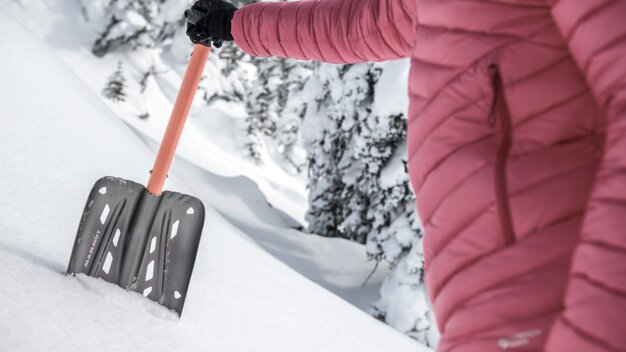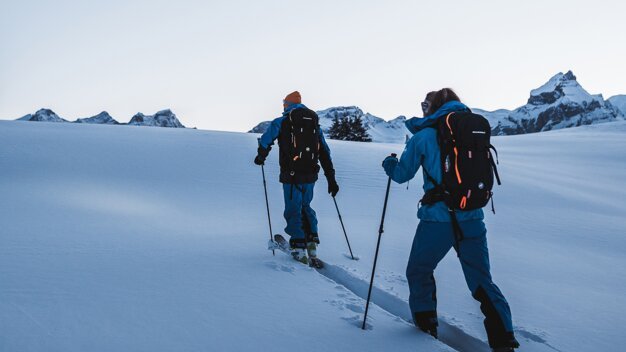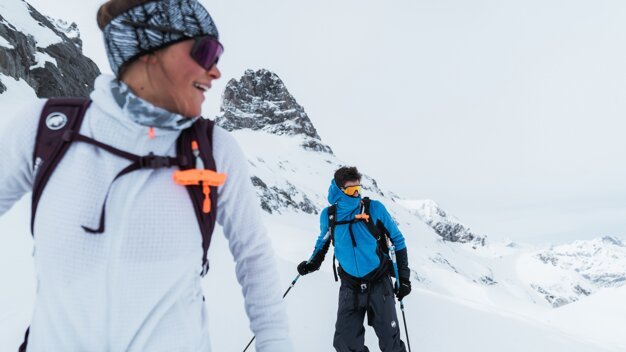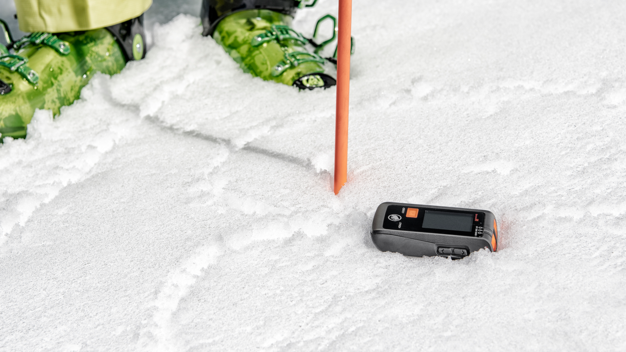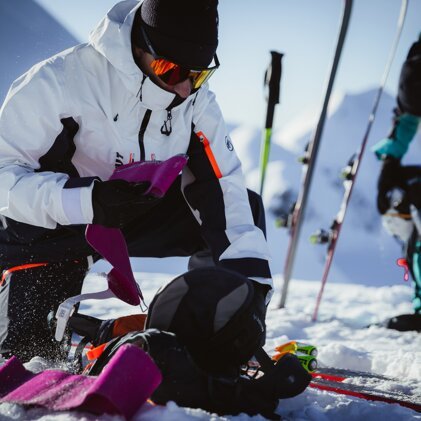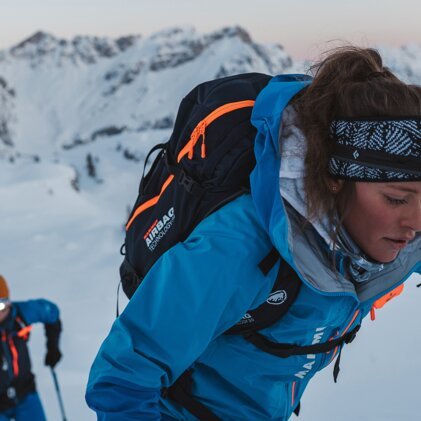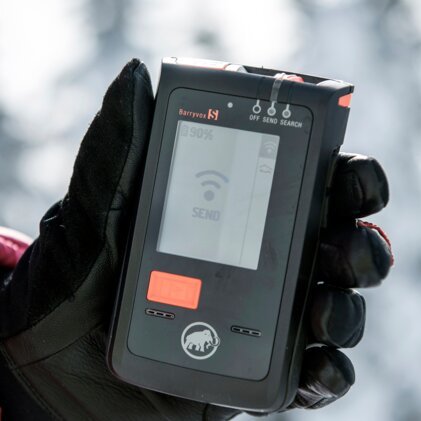
Nothing beats the feeling of leaving your tracks in fresh powder snow or conquering the steepest slopes in the backcountry. Unfortunately, this feeling of ultimate thrill and joy also comes with a significant downside: the risk of avalanches. Within a fraction of a second, a fun day in the mountains can turn into a life and death situation. That’s why safety matters all the more!
Avalanche training courses can not only help you avoid triggering an avalanche. You’ll also learn how to use your safety equipment and what to do in the event of an avalanche.
Why take an avalanche training course?
Victims of an avalanche usually only have about 15 to 35 minutes until they run out of oxygen. That’s why the chances of survival drop to under 50 per cent after 15 minutes. So acting quickly and efficiently can save lives!
Even if you hit the backcountry with experienced friends – in case of an avalanche, there’s no time for hesitation. Every second counts. And taking the right steps when you’re under shock only works if you know what you’re doing and have practised it many times over. That’s why participating in avalanche training courses on a regular basis is so important.
Who benefits from taking an avalanche training course?
Everyone planning to hit the backcountry – without exception! No matter if you’re a total newbie or a seasoned pro. The only prerequisite is that you’re confident on skis or a snowboard and have some initial experience in powder snow.
Depending on your skill level and whether you have taken a course before, you might opt for either a beginner or an advanced course – but taking one is always a good idea! Mammut Alpine School, for instance, offers both a “basic course” and an “intensive course”, catering to the needs of a variety of backcountry enthusiasts.
Pro tip
Ideally, you take the course with the group of friends you’ll spend the most time in the mountains with. Why? Quite simply because a successful rescue is a coordinated team effort. That’s why you should practise your skills as a team, find out who takes on which role in the recovery of a victim, and become familiar with your group dynamics under stress.
What will I learn during an avalanche training course?
During the course, you’ll receive some theoretical input on, for instance:
- how avalanches are triggered and where they are likely to occur
- how to read an avalanche report
- the 3x3 method
- snow science: layers, forecasting, etc.
- interpreting danger signs
- tour planning
- safe backcountry habits
- how your gear works
- etc.
What’s more, you will also practise applying the theoretical knowledge that you have just learned. For instance, you will find out what to do in the event of an avalanche (initiating the rescue chain, locating a burial victim, etc.) and how to use your safety gear (probe, shovel, transceiver, airbag, …).
Important: Even the most advanced equipment is only as good as the person using it!
What else to look for in an avalanche training course
Besides the contents of the course, there are a few more factors that might help you determine the quality of the course that you’re planning to sign up for:
- Training of your guide(s): For instance, all Mammut Alpine School guides are members of the International Federation of Mountain Guide Associations (IFMGA).
- Number of participants: 3 to 8 participants is usually a good number to shoot for.
- Option to obtain a certificate: Through the Mammut Alpine School, you can get certified in accordance with the standards set by the Swiss Mountain Guide Association (SBV), for example.
How and where can I take avalanche training courses?
If you want to take an avalanche training course in the Alps, you can choose from several different organisers. Among the most well-known are:
- Mammut Alpine School
- Austrian Alpine Club
- German Alpine Club (DAV)
- Pieps LVS Training Stations
- SAAC (Snow & Alpine Awareness Camps)
INTERSPORT Rent tip
Practise, practise, practise – every year, again and again! By taking an avalanche safety course, you will be better prepared in case of an emergency. This can save lives – your own or that of your friends. So it’s definitely money and time well spent. And it will allow you to enjoy your adventures in the backcountry even more!
If you’re still looking for equipment for your next trip into off-piste terrain, go ahead and visit us at one of our INTERSPORT Rent shops. We’ll gear you up for maximum fun in fresh powder!
Related articles
You may also be interested in:
